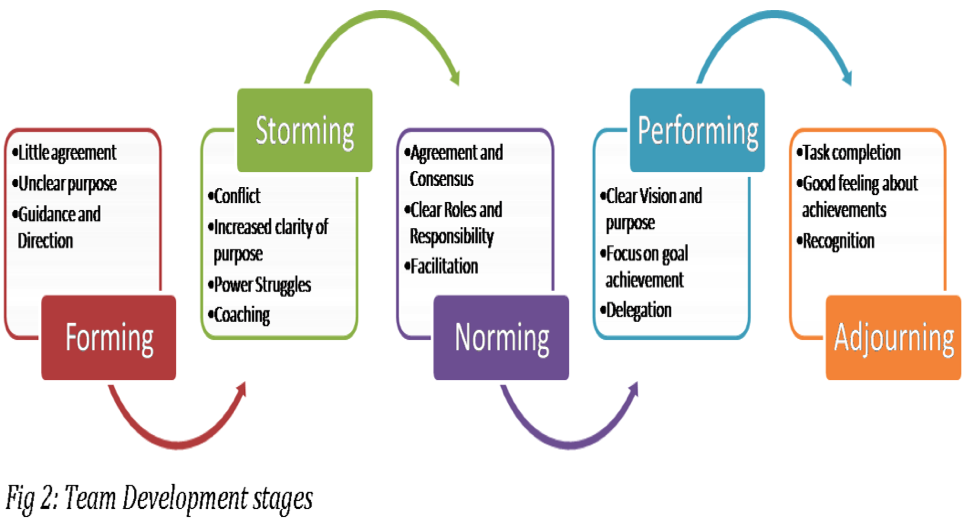Successful collaboration online is not “just” happening. This is a learning from my own experience at different points of time on my “educational journey” but also a reflection made from literature that I read. I want to focus on how collaborations can be initiated and teams developed. It is so amazing to be able to experience myself from a student perspective – again. It was ages ago since last time…
You have probably heard about Bruce Tuckman, the five-stage development process of most teams? (mindtools.com) I had not before this course! But it is so striking and true, and I love how it is illustrated.

Tuckman called the five stages of team development according to this: forming, storming, norming, performing, and adjourning. Team progress can also be visualized as below (Fig 2) where 1) Forming stage is where the team is formed and everyone shows their best behaviour. Strong guidance is needed by facilitator. Next step is 2) Storming – and this is where our group was in topic 3. But wow, what a learning process that was! Different perspectives, cultures, goals and maybe a bit of feeling of lack of progress. But we made it to the step 3) Norming – where the team members start to resolve their differences, appreciate colleagues’ strengths, and respect the leader’s authority. Maybe we already is in Stage 4) Performing – where hard work goes hand in hand with satisfaction about the team’s progress. Team confidence makes team roles more fluid and more tasks can be delegated by the facilitator. Problems are prevented or solved as they pop up. Last stage is 5) Adjourning – this is where we should party and give ourselves some credit for the hard work we put together!

Further, an other learning is what Brindley (2009) has written, that working in smaller groups increased the participation. The study suggest that group activity should come later on in a course so that the participants have time to build the necessary skills of online collaboration and there should be a balance between the clarity of the task and the flexibility of the task. She explain how to increase motivation for participation by following dots:
- Clear instructions
- Transparency of expectations
- Relevance
- Motivation for participation embedded in course design
- Appropriateness of task for group work
- Readiness of learners for group work
- Timing of group formation and respect for the autonomy of learners
- Monitoring and feedback
- Sufficient time for the task.
As a program leader for two different programs, I am soooo going to use the Tuckman model as an example to work from when have the program start ups in September  And also look into how I can create the best learning environment for new students.
And also look into how I can create the best learning environment for new students.
Wish me good luck!
References:
Brindley, Jane.E, Walti, Christine & Blaschke, Lisa.M. 2009. Creating effective Collaborative Learning Groups in an Online Environment.
MindTools.com. Norming, forming, storming and performing. Understanding the stages of team formation. Open here
MindToolVideos: Forming, Storming, Norming, and Performing: Bruce Tuckman’s Team Stages Model Explained. Open here